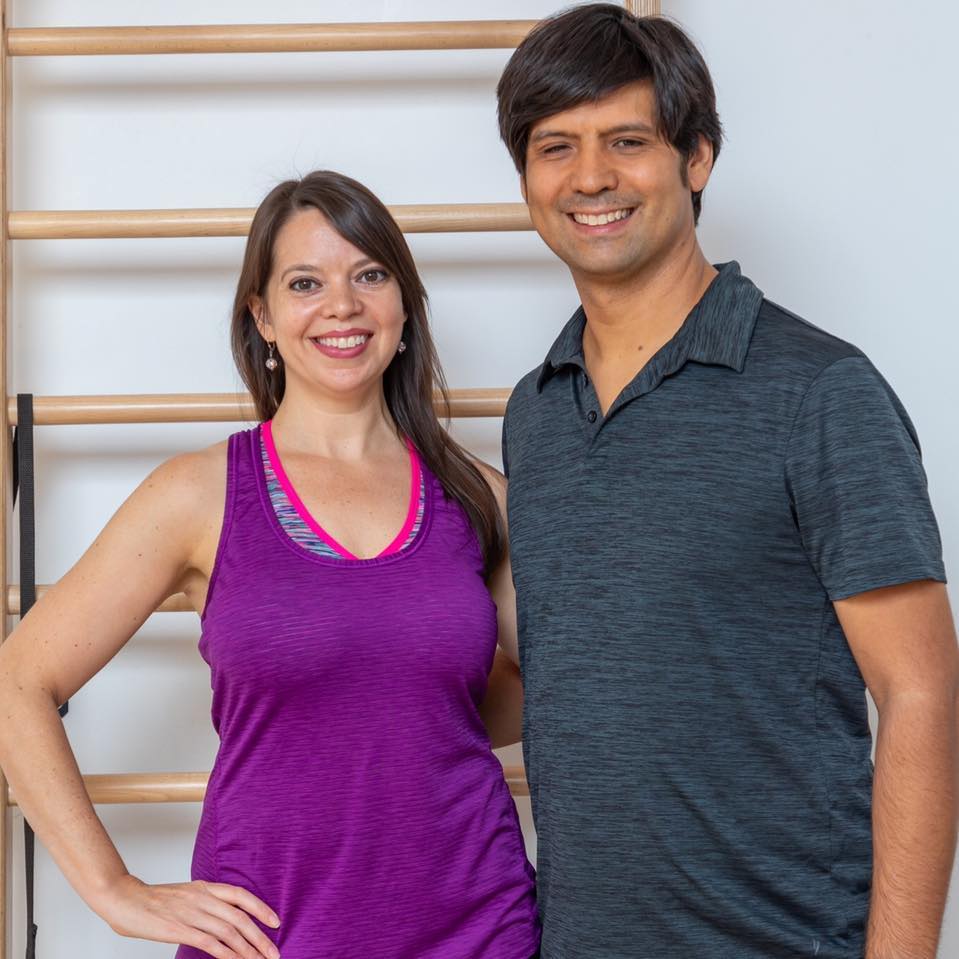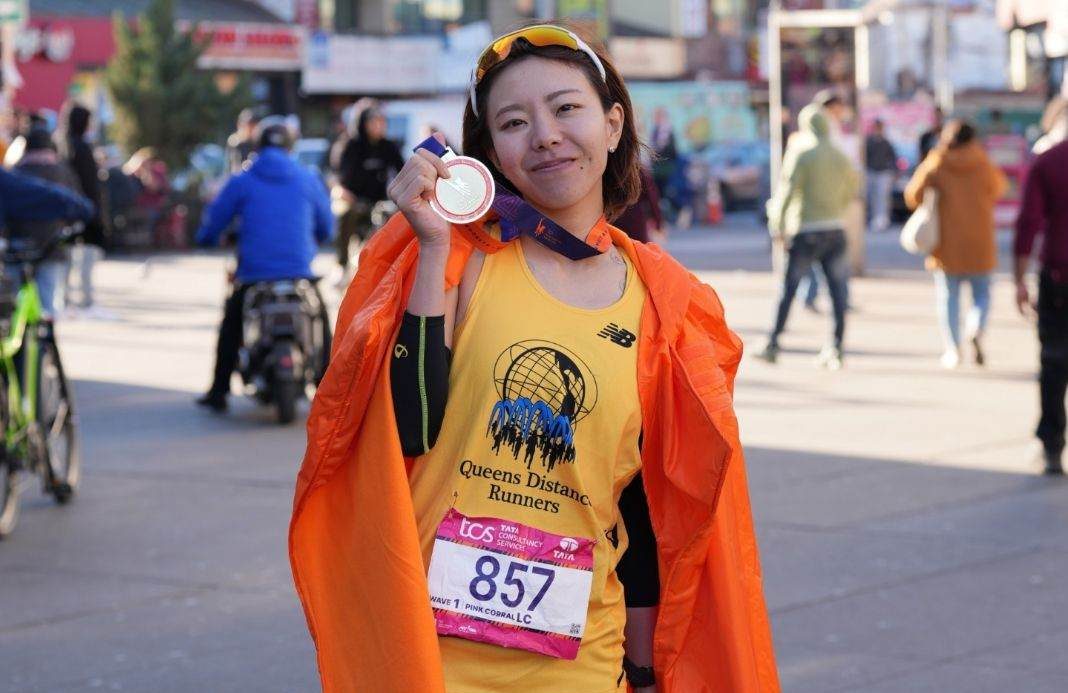
By Paulina Albarracin
“The Pilates Method teaches you to be in control of your body and not at its mercy.”
– Joseph H. Pilates
Nestled near the vibrant Austin Street in Forest Hills, Spencer Pilates Arts was founded in 2006 by Spencer Baker, making it one of the first Pilates studios in the World’s Borough. Baker developed a passion for dance and fitness while pursuing a Master of Fine Arts [MFA] at CUNY Hunter College. Drawing inspiration from his undergraduate degree in Anatomy and Physiology at Cornell University, the Chicago native envisioned a studio that offered rehabilitation services to address physical ailments. With three years of experience creating workouts in a physical therapy clinic, Baker approached each session as an extension of his visual creativity. This unique philosophy has earned Spencer Pilates Arts the title of Best Pilates Studio from the Queens Courier five times during the 2010s and 2020s.
Samantha Baker, his wife, also utilizes her background in jazz and ballet dance to help clients understand their body mechanics. Born and raised in Detroit, she moved to State College, Pennsylvania before relocating to New York City in 2007. Together, the Bakers lead various fitness classes, ranging from barre to specialized workshops. Since 2020, they have developed a passion for running through the streets with Queens Distance Runners (QDR). Their shared love for movement has solidified their status as a power couple in the fitness community.
What kickstarted your passion for Pilates?
Spencer Baker: While attending graduate school at CUNY [Hunter College], I took a dance class every day as a hobby. I just fell in love with it [dance]. I also heard about Pilates from people in these classes. This was about 20 years ago. Several people were making a living out of this job, and I didn’t even know what it was. But I knew that it used rehabilitation [techniques] and it helped people. I thought it seemed like an interesting world. I was working as a freelance photographer after graduating, and the freelance work suddenly dried up. I knew somebody doing this [Pilates], and she offered to certify me. So that’s how it all happened.
Samantha Baker: I was working at a law firm as a paralegal. And then, I met Spencer while taking classes at the studio. I realized I loved it! It reminded me of when I did dance when I was younger. I appreciated its relationship to dance and how it made me feel better about my body. So, I decided to teach. I wasn’t happy with my job at the time. I didn’t like the place I was working at. I changed careers from working at a desk job to becoming a Pilates instructor. [Laughs]
Based on what you’ve seen in your tenure as instructors, how is Pilates beneficial to runners?
Spencer Baker: I think the issue is that runners inflict themselves with common injuries. Almost all distance runners get some type of injury. Pilates is an exercise where you ask yourself, “Could you defend against an injury before it happens?” You have to think about it, which has quite a bit in common with how runners train. If you execute your plan, you don’t injure yourself over a distance race. Pilates mirrors that because you have to make your plan. You’re going to build up the strength in places that will prevent yourself from getting injured. Even though distance runners didn’t develop it [Pilates], it seems to work well [for runners].
Samantha Baker: I would agree. A lot of it [Pilates] is balancing muscles and increasing awareness of how your body functions. You’re also developing your core strength and improving your alignment. You will also become more aware of which muscles are stronger or weaker. It [Pilates] targets smaller muscle groups that you might not engage with other forms of exercise, which can help prevent injuries.
Pilates studios have become more ubiquitous in NYC as of late. What makes Spencer Pilates Arts stand out from the rest of them?
Samantha Baker: We offer affordable classes. And a lot of classes.
Spencer Baker: That’s true.
Samantha Baker: We have a lot of diversity in our classes. We have different machines that we use.
Spencer Baker: There are different apparatuses. But there are other great Pilates studios in New York and other great people in the field. I think what’s rare about our studio is that compared to other studios, we do not sell ourselves on a brand. All these places are selling people with their brand. You can come into our studio and say hello to us. And we know almost all the names of those walking to the door. And we might even know things about their body. Some of the people have been coming here for 15 years. Because we have a mom-and-pop brand, we help people on a personal level. You won’t get that in business chains or large studios that are popping up left and right.
But I know we’re in New York City, and I want to be generous. There’s got to be great people out there giving great fitness classes. I don’t want to say, “I’m the only one.” There are other mom-and-pop studios that deserve love. [Laughs]
What made you guys catch the running bug?
Spencer Baker: It was because of the [COVID-19] pandemic to some degree. But also, I was getting into my 40s and thought I needed something else. One of my clients, Dana, told me about this thing called The Kessel Run. [Laughs]
Samantha Baker: She mentioned that we should try it! [Laughs]
Spencer Baker: That’s right. Dana mentioned to us that we must go to this weekly run. It’s got friendly people. It’s pretty much a short, friendly Friday night run. I thought it sounded great! Then, the pandemic happened, and I needed to go out. I was getting older, which changed the way I looked at fitness. I liked getting to know runners from different running clubs doing something that improves their fitness. The running clubs seem inclusive. You see people of all ages running together. And it’s not just QDR. A lot of running clubs have good energy. So, I was impressed with the sport. Most people who are in these [running] clubs, as far as I can see in New York, are older. A lot of them are older adults, which is inspiring to see.
Samantha Baker: At first, I found it hard to run. But once I started running more often, I loved it. I love the challenge of it. It’s a mental challenge, not just physical. It’s a nice feeling to run through the trails at Forest Park.
Spencer Baker: It’s something that we get to do together.
Are there any classes offered at Spencer Pilates Arts that are geared towards runners?
Spencer Baker: I think Pilates was made for runners! The way Pilates was originally made works well with the sport. I can’t really improve upon it. [Laughs]
Samantha Baker: We have workshops.
Spencer Baker: We’ve had workshops for runners. But honestly, the way it was made, it would be great if I can add something to it. Pilates will defend against common running injuries.
Also, I realized that Spencer Pilates Arts will be celebrating its 20th anniversary next year! Are there any plans to commemorate this milestone?
Samantha Baker: I think we’ll have to plan something! [Laughs] We’ve had a couple of gatherings before, like Fourth of July parties.
Spencer Baker: But we’ll keep planning great classes and teaching people about exercise. We’ve got great plans. [Laughs]
This interview has been condensed and edited for clarity.



